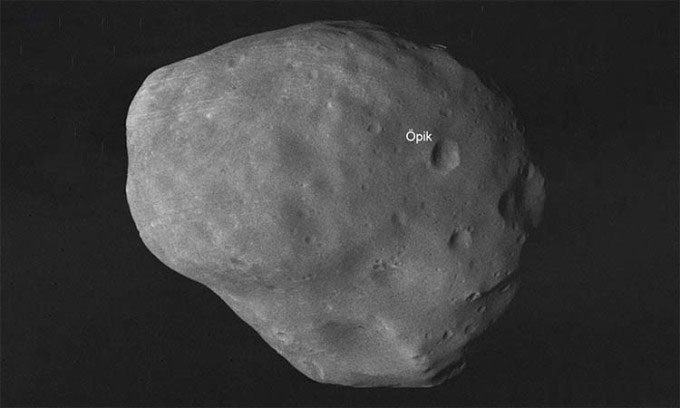The Tianwen-1 spacecraft in orbit around Mars has sent back images of Phobos, revealing formation traces from cosmic impacts.

Image of Mars’ moon Phobos captured by the Tianwen-1 orbiter, released on July 23 to commemorate the second anniversary of the spacecraft’s launch. (Photo: CMG)
The Tianwen-1 orbiter sent back high-resolution images of Phobos, Mars’ natural satellite, on July 23, marking the second anniversary of the spacecraft’s launch into space.
Mars has two moons, Phobos and Deimos (meaning “fear” and “terror”). Phobos is the larger of the two and orbits closer to the Red Planet. It has an irregular shape with an average radius of about 11 km, flying at an altitude of 6,000 km above the Martian surface in a nearly circular orbit. Phobos completes one orbit in just 7 hours and 39 minutes.
The Tianwen-1 operations team took advantage of the spacecraft’s relatively close approach to Phobos to capture clear images of the moon in its “full moon” phase.
In the images, Phobos appears irregularly shaped, resembling a potato. The long streaks on the surface in the upper left corner are likely formed by impacts. The upper right corner features a crater named Öpik with a diameter of about 2 km. This depression is named after the Estonian astronaut and astrophysicist, Ernst Julius Öpik.
China launched the Tianwen-1 mission on July 23, 2020, sending an orbiter, a lander, and a rover to Mars. In February 2021, the spacecraft entered orbit around the Red Planet. The lander and rover successfully touched down on the Martian surface and began operations in May 2021. Since then, both the orbiter and the rover have sent back valuable images and scientific data.


















































